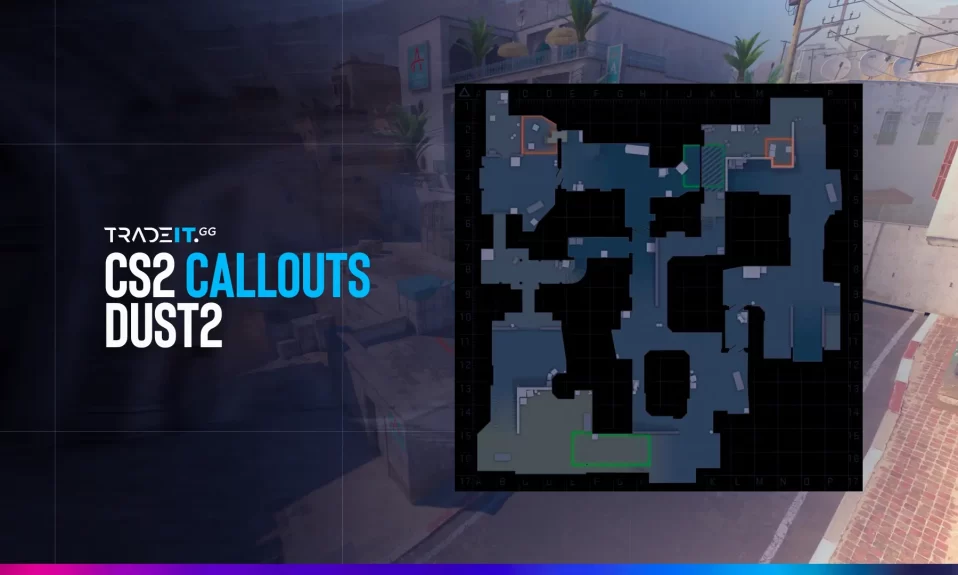Southeast Insights
Your go-to source for news and information from the vibrant heart of Shenyang.
Navigating Chaos: Your Go-To CS2 Callout Compass
Master CS2 with our ultimate callout guide! Navigate chaos like a pro and elevate your game today. Click to conquer!
Mastering Callouts: Essential CS2 Terminology for Competitive Play
In the fast-paced world of competitive CS2, mastering callouts is crucial for effective communication and strategy among teammates. Callouts refer to specific in-game locations and positions that players use to quickly convey information about enemy movements and map control. Understanding essential terminologies such as 'site', 'mid', and 'flank' can be the difference between victory and defeat. A concise yet comprehensive list of common callouts includes:
- Bomb Site A
- Bomb Site B
- Long
- Short
- Kitchen
- Stairs
Effective use of callouts not only helps in sharing vital information but also fosters teamwork, making it essential for players aiming to climb the ranks. To further enhance your communication, remember to adjust callouts based on the map you are playing. For example, terms like 'Top Mid' and 'Lower Tunnels' are integral to maps like Dust II and Inferno, respectively. Additionally, clarity is key; when calling out an enemy's position, try to be as specific as possible. Instead of saying 'there's a guy over there', specify 'there's one at Blue Door' for better situational awareness among your team.

Counter-Strike is a highly popular first-person shooter that requires teamwork and strategy to achieve objectives. Players can practice their skills against cs2 bots, which can provide a valuable training experience before facing real opponents.
Top 10 Callout Mistakes NewCS2 Players Make and How to Avoid Them
When diving into CS2, new players often make several common mistakes that can significantly impact their gameplay. One major error is neglecting to communicate effectively with teammates. Utilizing the in-game voice chat or typing commands can make a big difference, yet many beginners hesitate to share vital information about enemy positions or status updates. Another frequent mistake is failing to understand the map layout, leading to poor decision-making during engagements. To avoid these pitfalls, take time to familiarize yourself with the maps and practice relaying information succinctly to enhance team coordination.
Additionally, new players often underestimate the importance of weapon selection and economy management. Many will default to their favorite gun without considering its suitability for the situation, which can yield negative results in rounds. It’s crucial to learn the strengths and weaknesses of each weapon and to save credits for crucial rounds. Also, new players often forget to utilize the callout system effectively, which can cause confusion during team plays. Therefore, familiarize yourself with popular callouts specific to each map and communicate them clearly to your team to avoid any mix-ups.
How to Create a Custom Callout System for Your Team in CS2
Creating a custom callout system for your team in CS2 can significantly enhance communication and collaboration. To start, the first step is to assess your team's specific needs and workflow. Gather input from your members about the types of information they frequently need to call out during gameplay. It might be helpful to organize this data into a list, prioritizing the most critical elements, such as player positions, enemy sightings, or strategy updates. This tailored approach will ensure that the callout system effectively supports your team's objectives.
Once you have a comprehensive list, the next phase involves designing the callout system's structure. Utilize a combination of symbolic codes and visual indicators to keep the callouts concise yet informative. For instance, you might implement a color-coded system where red signifies danger, green indicates safe zones, and yellow represents strategic locations. To ensure everyone is on the same page, conduct practice sessions allowing team members to familiarize themselves with the system. This preparation will create a seamless integration of the custom callout system into your team’s strategy in CS2.